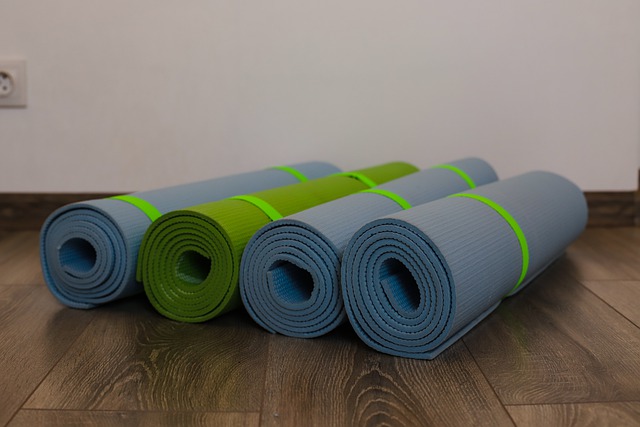The feeling of rolling out your sticky mat before you exercise and discovering a layer of filth or smelling a faint scent of sweat from days before is unbearably unpleasant. Consider this for a moment: Yoga mats are designed to absorb all of the perspiration, oil, and grime that they come into contact with during practice. In other words, they can get filthy, smelly, and even infected with pathogens very quickly, especially after a hot yoga class or an unusually sweaty asana session.
The whole notion of the dirty hippy yogi should be thrown out the window. Maintaining cleanliness is essential in practice.
Cleaning on a regular schedule
It’s a good idea to clean off your yoga mat after each practice, regardless of whether it’s a thick or thin mat. Think about using either a homemade yoga mat cleanser or a store-bought cleaner like Manduka’s Mat Renew after every practice. It’s a good idea to bring some cleaning supplies to your appointment.
Then, using circular motions to clean the whole surface of the mat, spray the cleaner onto a towel. Before you roll up your mat at the conclusion of practice, make sure to wipe both sides down.Check the care directions for your mat before you choose a cleaner. Examples include brands that do not promote vinegar-based solutions, as well as brands that discourage the use of essential oils in high concentrations.
In order to do a thorough cleaning, you should use the following methods:
- When you begin to see more dirt and grime on your mat, it’s time to give it a more thorough cleaning and disinfecting. Keep an eye out for discolored or unclean patches of carpet. It is also recommended that yogis who live in warmer climates or who practice in heated spaces deep clean their mats at least once a week.
- Use a soapy water solution to clean your open-cell mat at least every two weeks if you have one of those. Mats that are thinner and closed-cell in nature will break down if they are submerged in water; therefore, spot cleaning should be done on those mats.
Yoga Mat Cleaning Instructions
- Maintaining your mat requires awareness of when it should be washed
- Once every couple of months, you should thoroughly wash your yoga mat, and more frequently if you don’t undertake routine maintenance on your mat or if you practice yoga on a consistent basis. As a result, your mat will last longer and will not smell or spread bacteria to you, which will save you time and money.
- Yoga mats should be washed once a month if you practice every day. This is especially important in warm weather.
- The more soil you notice on your mat, the more probable it is that it will need to be completely cleaned and dried.Consider replacing your yoga mat if it has begun to peel or if little bits of it have begun to adhere to your clothes.
- Ensure that your yoga mat is thoroughly wet before beginning
- Prepare a mix of hot water and a light detergent, including such liquid detergent, and then use it to wash your windows. Soak your yoga mat in a bathtub for a few minutes after submerging it in it.
- Gentle cleansers for your yoga mat include dish soap and hypoallergenic laundry detergent, which are both excellent choices.
- When washing in warm water, try not to use too much detergent at once. Excessive use of detergent may cause your mat to become slick, making it harder to do asanas on it.
- For every 1 gallon (3.8 L) of lukewarm tap water, add 1 tablespoon (15 mL) of laundry detergent or dish soap.
- Keep in mind that this may leave a long-lasting and unpleasant aroma on the surface of your yoga mat, which may make practicing yoga less enjoyable for some. Because vinegar can impair the quality of your yoga mat, it is important to use caution when using it.
- With a gentle cloth, gently wash the mat
- Using a soft cloth, wipe both sides of your mat after it has been soaking for a few minutes. Wipe each side thoroughly, paying particular attention to the areas where your hands and feet come into contact with the surface the most.
- Areas that are frequently used will have a colour that is somewhat different from the rest of your mat, making it easy to distinguish them.
- Please wipe each side gently to avoid degrading the mat or removing any bits of material from the bottom of it.
- The absence of bubbles from the detergent is perfectly OK. You should keep in mind that you just want enough detergent (and bubbles) to clean the mat and not enough to make it slippery.
- Use clean water to thoroughly rinse your mat
- Immediately after washing and drying your mat, draining the container in which this is sitting and thoroughly clean the mat with fresh water. Using this method, you will be able to remove any soap residue and reduce the likelihood of having a slippery mat.
- The soft cloth should be used again if the water does not clear up completely after rinsing it off.
- Your mat should be dried on a hook
- Unroll your yoga mat from the towel when you have finished squeezing out the extra water from it. It should be hung up to dry completely.
- You can hang your mat using pant hangers, but keep in mind that these may leave markings on your floor.
- Spread out your yoga mat on top of a laundry drying rack, which will allow both sides of your mat to be thoroughly dried.
- Yoga mats should never be dried on clothes drying rack. Performing this action can not only damage your mat, but it also has the potential to start a fire.
